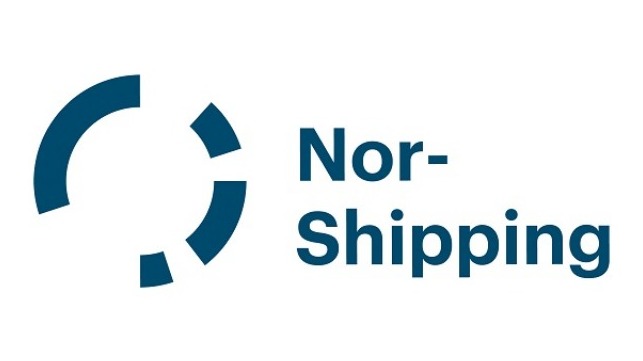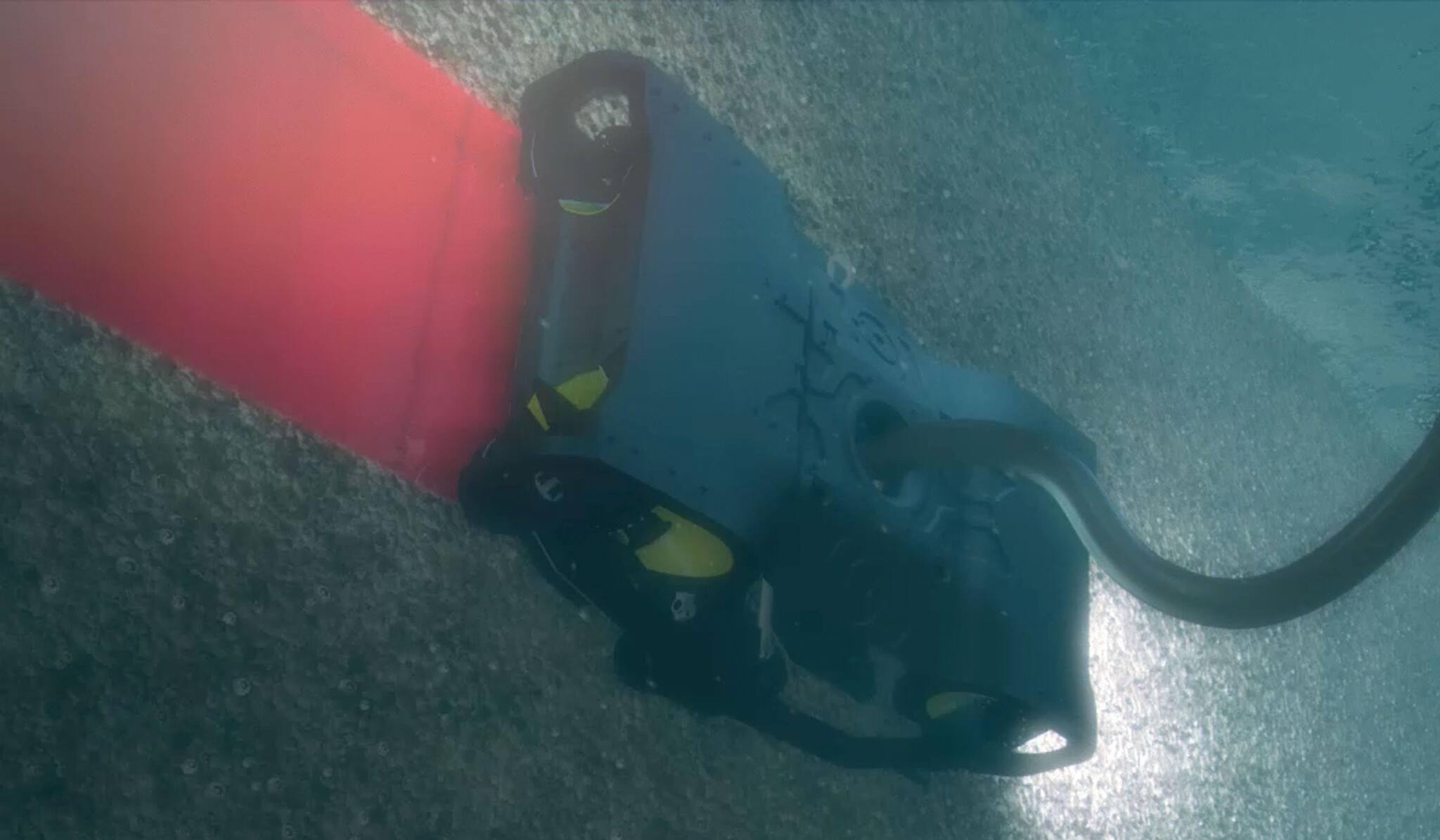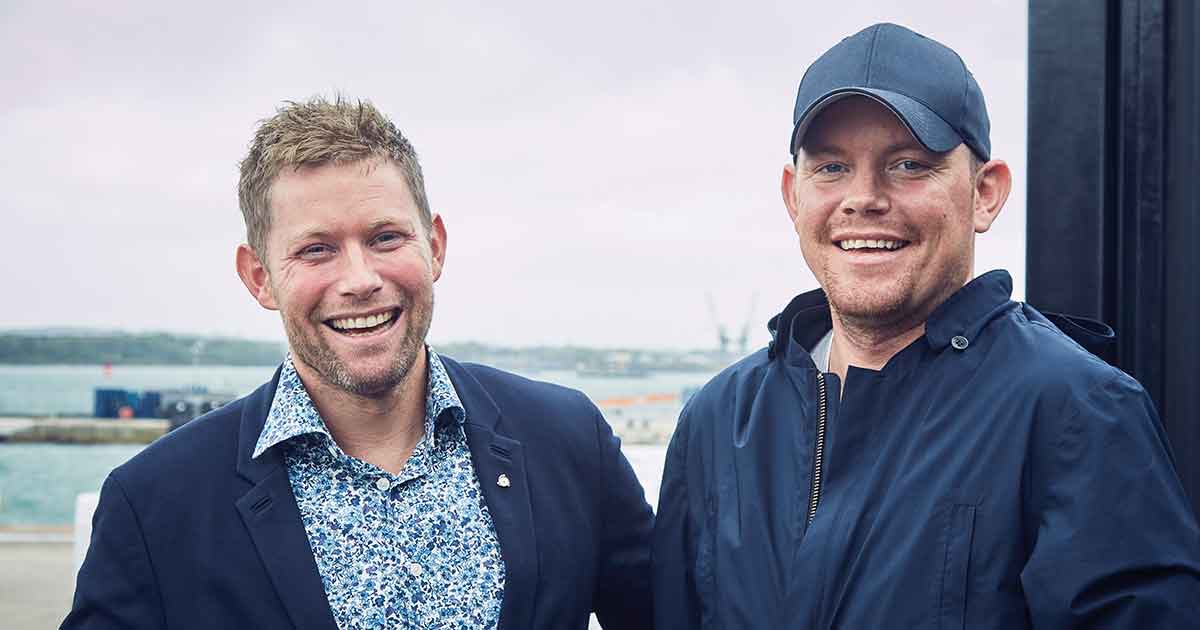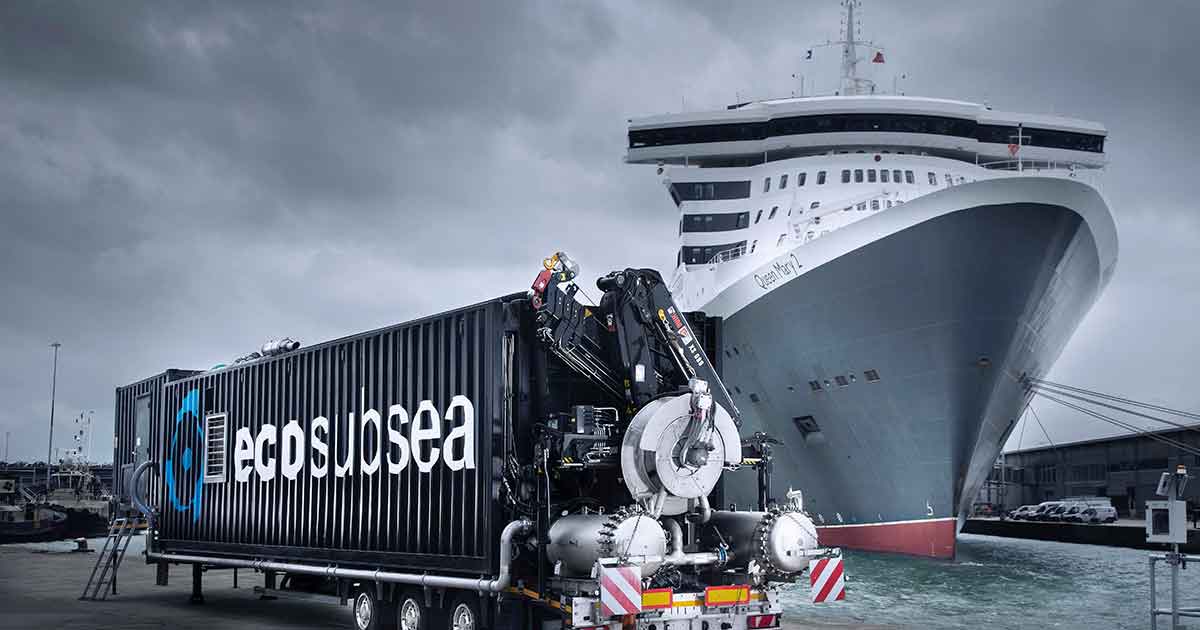Norwegian brothers Tor and Klaus Østervold finally have proof of concept for their revolutionary ECOsubsea hull cleaning technology, transforming a pressing environmental problem into potential business profit – both for them and forward-thinking shipowners, ports and service suppliers. Here Tor explains how this young business will help maritime rid itself of an age-old problem.
 “Some challenges you can fix overnight, some might take a week or a month, and some take 11 years.”
“Some challenges you can fix overnight, some might take a week or a month, and some take 11 years.”
Tor Østervold is laughing down the line from the ECOsubsea business base in Southampton. The affable 36-year old is describing how, after setting up shop with his younger sibling Klaus in 2008, it’s taken this long for “everything to fall into place”. But, considering the ambition and innovation that define the business, the wait is hardly surprising.
“We’re addressing a problem that impacts upon shipowners, ports and, bearing in mind the environmental implications, upon society itself,” states the ECOsubsea CEO (Klaus is COO). “So, it was never going to be an overnight fix!
“We have developed revolutionary technology here, and I firmly believe it can be the ‘missing piece of the jigsaw’ in terms of the industry’s quest for greater sustainability.”
Sticky issue
But before we get on to that solution, what exactly is the problem?
In short, bio-fouling. Organic matter that attaches to vessel hulls creates friction on otherwise smooth surfaces, leading to loss of speed and a decrease in fuel efficiency. This in turn causes greater fuel consumption, higher operational costs and increased emissions spilling out into the atmosphere. In fact, studies have shown that maintaining clean hulls could help the world fleet reduce costs and emissions by up to 15-20%. A hugely compelling figure in an era of both reduced margins and greater environmental awareness.
 EcoSubsea's unique ROV at work
EcoSubsea's unique ROV at work
However, traditional cleaning methods that center around diving teams scrubbing vessel surfaces are problematic. Not only is the job itself time and labor intensive, but it also leads to the organic matter being deposited on the seabed and this, through the spread of potentially invasive species, impacts upon local ecosystems. As a result, many ports have banned - or are in the process of looking into banning - established hull cleaning practices altogether. And then, there’s the scrubbing action itself, which can be damaging to the expensive coatings shipowners invest in.
“This is a major issue for our industry,” Østervold argues. “It hits every stakeholder in one way or another, impacting upon business performance, local communities, broader society, and the health and well-being of our planet.
“That’s the scale of the problem. And, for ECOsubsea, that’s also the opportunity.”
Smooth operator
Established in Norway, but with a main operational base in the port of Southampton (which itself banned hull cleaning back in 2010) and a growing international footprint, the Østervold family business utilizes complex technology to offer a simple solution – ‘clean hulls and no crap’.
Picture an underwater vacuum cleaner, an automated lawnmower, or even an Oxpecker (the bright billed little birds that scour the backs of rhinos, zebras and other large mammals eating parasites). ECOsubsea’s technology shares qualities with all of them. A remotely operated underwater vehicle, it clings to ships and works over the entire hull area, removing all biofouling, before sucking it down a tube for on-shore collection, filtration and, in a neat innovation, use for biogas (thanks to a project with waste and energy management giant Veolia). The entire process takes an average of 8.5 hours, with the ‘COLLECTOR’ unit amassing over 97.5% of everything that is removed from the hull.
“This far exceeds the most stringent local and international regulations, meaning ECOsubsea cleaning can be done in any port, anywhere,” Østervold explains. “And as our solution uses high pressure ‘soft jets’ of water, instead of abrasive brushes, the integrity of vessel coatings is completely safeguarded, while the quality of cleaning far out strips what is possible through manual scrubbing.
“It is a gamechanger,” he adds. “It is proven, reliable, and we see huge demand for the benefits of clean hulls, greater efficiency and environmental protection worldwide.”
 Tor and Klaus Østervold - CEO and COO of EcoSubsea
Tor and Klaus Østervold - CEO and COO of EcoSubsea
The path to progress
The foundation for the business may have taken time to build, but it appears to be rock solid.
The brothers initially disclosed their plans to AP Moeller Maersk in April 2008 and were invited to stay in Denmark for three months to research the concept. Four years of development followed before, in 2012, the first prototype emerged. The technology was a success from its very first date with a vessel, but, unfortunately, it got a little too attached.
“The cleaning quality was excellent,” Østervold reveals, “but it took its time! In fact, the unit took 61 hours to clean a hull. So, in terms of efficiency, it wasn’t quite what we’d hoped for!”
Seven years of intensive testing, refinements and partnerships have followed – with cleaning projects for leading owners such as Carnival, WWL Ocean and Hoegh Autoliners. The company has now completed over 500 assignments, with the Southampton unit accumulating more than 4000 hours of service.
“We have the optimal technology, operational expertise and business understanding to take the next step and really begin scaling up,” enthuses the ECOsubsea head. “It’s a process that is now underway.”
Flexible approach
The company has just reached agreement with the ports of Antwerp and Zeebrugge, giving it the green card to roll out the system in these busy hubs, greatly increasing access to the world fleet. In a demonstration of the flexibility of ECOsubsea’s business plan, the team is working with existing local diving companies who will carry out the cleaning as a service provider, with full training and certification to be undertaken at the Southampton base.
“In the UK we work with our own team on operations,” Østervold explains, “but to meet demand and grow market share we’re very open to establishing expert partnerships with both service providers and forward-looking ports, who can then offer this as a part of port infrastructure and create a new revenue stream.
“In addition, we also see demand coming from larger shipowners who may want their own cleaning hubs for fleets, ensuring continually smooth hulls and optimal business and environmental performance.”
Does he see the possibility for smaller machines that are permanently attached to individual hulls, constantly crawling over them to maintain standards?
“Yes, it’s certainly possible,” is his coy answer. “We are looking at different unit sizes, but for the time being we have an ideal universal size for ships of any type ranging between around 150 and 400 meters. The future business potential within that context is enormous.”
The Nor-Shipping boost
Casting the view back for a moment, Østervold highlights a key milestone that has helped position ECOsubsea for the opportunity now lying ahead.
“We’ve been very fortunate in many respects,” he notes, “getting the initial meeting with Maersk, working closely with pioneering owners such as Wilhelmsen, finding a port (Southampton) that’s view on environmental protection, efficiency and innovation dovetailed so seamlessly with our own. But in terms of individual events, I’d have to pinpoint Nor-Shipping 2013 and our success in the Young Entrepreneur Award as a standout.”
The exposure at the Oslo and Lillestrøm-based ocean industries event week, he says, elevated the business onto another plane in terms of market awareness. Suddenly ECOsubsea went from an ambitious start-up to a recognized star of the future, changing everything.
“It kick-started the business and really put us on the map,” Østervold stresses. “The fact that I could go out on that stage, in front of that audience of key industry leaders, to receive a prestigious award and talk about our ambitions was priceless. In addition, the association with the Nor-Shipping name gave us an enduring stamp of approval, demonstrating our quality approach, opening doors and helping us attract the attention and expertise that has, fundamentally, been instrumental in getting us to where we are today.
“It’s fair to say Nor-Shipping has a special place in our hearts! I’ll look forward to seeing who wins the award in 2021.”
Setting new standards
For the time being the Østervold brothers are focused on spreading news of their own developments, targeting quality conscious owners and ports that are open to innovation.
“I think this will become the new standard in cleaning operations,” the older Østervold concludes, “but it will take time to embed itself throughout the industry. Right now, we’re focusing on the maritime leaders that are already aware of the compelling benefits of clean hulls and the enormous toll that biofouling takes on the environment (both in terms of emissions and invasive species). They will be the early adopters that lead the way to greater acceptance throughout shipping as a whole.”
But that’s not a process that will happen overnight?
“No,” he says with a final laugh, “but it shouldn’t take another 11 years either!”


